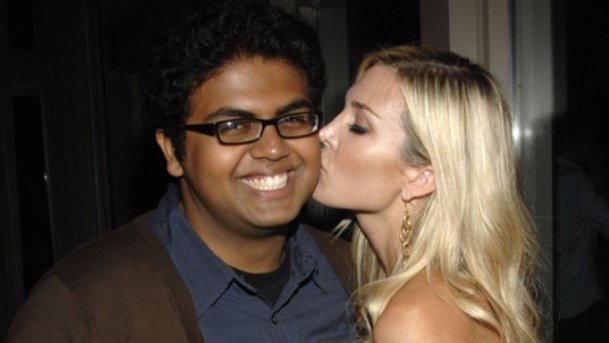The It of Clara Bow: How Mitochondrial
What is now the “influencer” was the It girl of the 1920’s and Paris Hilton’s 90’s and early naughts. What is she wearing, where is she going and who is she doing?
When Cosmopolitan writer Elinor Glyn popularized* “It”, she defined it as an indescribable factor that places a person’s attractiveness beyond their looks to their warm confidence. She confined it to attraction by “the opposite sex”. Rudyard Kipling originally used the term in the same context in Mrs. Bathurst (1904), so the feeling has apparently around forever.
Elinor Glyn makes a cameo in the film.
Glyn made silent movie stars like Clara Bow legends. Hollywood made the 1927 movie It about a “shopgirl” who creates an image of luxury, desirability and mystery. Who’s that girl? Betty Lou lands the department store boss and Clara Bow becomes iconic. The girls want her Max Factor look and the boys want to drink with her.
One of Betty Lou’s admirers reading Elinor Glyn’s “It” series in Cosmopolitan.
“It” became a series in Cosmopolitan. It inspired the movie.
As film technology advanced to talkies, hearing Bow’s Brooklyn accent may have been too much reality for this fantasy world of the It Girl. She was over it by 28 years old and retired. Bow was overworked, unadapted and badmouthed. Joan Crawford pulled a Mariah with a “I don’t know her” despite reportedly being really good friends.
Clara Bow and Joan Crawford both starred in silent movies. Being the newbie on the scene, Crawford eventually dethroned Bow.
Like Bow in the 1920’s flapper era, social media gossiping makes Taylor Swift’s romantic life into a viral circus illusion and personal mind-game. That certain something that retains interest until it does not leaves an emptiness. Clara Bow escaped her depressing origins to enter and eventually abandon disillusioned Tinsel Town.
Overconsumption of the It Girl contributes to the depletion of energy- Lindsay, Paris, Kim K’s exes, and their followers.
Remember Tinsely Mortimer? Of course not. Point made.
THE $CIENCE
Elinor Glyn made a cameo in It explaining what “It” is. Everyone wanted to know if they had “It”.
How many times have you run out to get the product you favorite IG influencer is promoting?
The creation of the It factor, like the “Queenmaker”* of the Tinsely Mortimer, Paris Hilton and Jamie King naughts, is one that can take a regular rich or poor girl and make her into something that occupies your life.
Energy. It is needed to live and get through daily tasks. Getting it from food, water and the air we breathe is supposed to be sufficient. Yet, we are constantly seeking for more and from other people. Most of the time it is people who are outside of our spheres that give us the most energy- positively or negatively charged. And it works both ways.
The mitochondria is biology's It Girl. It gives energy and uses oxygen to do it. “It” takes all of their admirer’s O2 and makes ATP. It has a relativity short life span.
Clara Bow as Betty Lou, a shopgirl, in It (1927). She finagles a date with friend and colleague of the store owner she is really interested in. She also gave the illusion that she was not in need of money. Her look was constructed minutes before the date by cutting up her day dress and using a bouquet as a brooch. He is convinced she has “It”.
Today, being It, or an influencer, is not restricted to romantic attraction and it is much more elaborate than a colonoscopy. Becoming “It” on a large scale is usually making something out of nothing through the help of various platforms. With the rise of pre-Facebook Instagram, Paris Hilton realized that her lack of oversharing led to her dethroning by her assistant Kim Kardashian.
In a 1954 film It Should Happen to You, Gladys Glover is an original Kim K. Both wanted everyone to know her name. Gladys was a recently fired unknown who bought billboard space with her name on it strategically placed all over NYC. Suddenly, regular people and talk show hosts started to notice and talk about her. Because she must be somebody to have her name on a billboard. Offers rolled in and she sacrificed ethics for fame. For the film, the end question was if it was worth it- like selling “Slim Kwik” advertising fake weight loss. Sound familiar?
Betty Lou not letting the fancy lady on the yacht outsmart her with French.
How many times have you seen a Kardashian-Jenner with a weight loss tea, shake or gummy? The Kardashian factor promotes a reality, but it is a scripted world that is sold to the masses. This is less “It” and more propaganda.
Growing up impoverished, Clara Bow’s dream of being a star faded when the reality of hobnobbing punched her in the face. She realized what an outcast she was in Hollywood when wearing a bathing suit to a dinner got her on the no-invite list.
Park Avenue Peerage blogger James Kurisunkal with Tinsley Mortimer. In an odd turn of events, the blogger was eventually exiled from the It girl scene. (Image: Vulture)
BOTTOM LINE
With everyone and their mom trying to be the It girl of social, it serves a potent though temporary high as much as it saps energy. The brain uses a lot of ATP for daily functions like cognition and memory. Chemicals responsible for love and addiction come alive watching someone else’s life- real or fake. Considering how old the concept of “It” is, this is a permanent phenomenon because average humans are constantly looking for inspiration and an escape from their reality. The life you wish you had.
*In reference to the Park Avenue Peerage blogger James Kurisunkal














